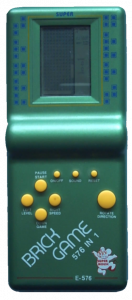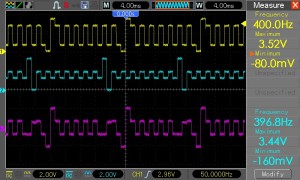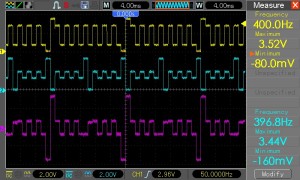Back in the times when users and vendors actually cared for their input devices, there were some great keyboards in the market, which were not only designed to last, but actually made to withstand even very harsh conditions. Good quality plastics, mechanical switches, good electrical and mechanical design practices and lasting keycaps and their legends are just some of the great advantages of vintage keyboards.
Monthly Archives: September 2012
9999 in 1 reloaded - part 2
This is part 2 of reverse-engineering the LCD driver inside a COB device on a cheap "9999 in 1" videogame. Make sure you also check out part 1 here: 9999 in 1 reloaded - part 1.
Driver analysis - part 2
Let's look at the last plots again. Yellow is common signal, cyan - segment signal, and magenta - difference across pixel. This time I measured them with the LCD disconnected, so they should look a bit nicer.
9999 in 1 reloaded - part 1
Introduction
After a couple of years of not even remembering about this wonderful piece of high-end gaming equipment I got my hands on a 9999 in 1 brick game.

They come in various versions. The number of games may vary (though in fact there are just a few of them, the rest being merely a result of cross product with all possible levels). Colors vary too, but they're all ugly.
Anyway, the device features a whooping 10x20 pixel main screen and a handful additional indicators like play/pause, next element (tetris), etc., and a couple of 7-segment displays, and can get me to spend hours (well okay, minutes) rotating bricks or racing.
So I thought there must be a way to overcome the low contrast of the display and the hopeless feel of the buttons and I started investigating.
Reimplement the whole thing for a PC or a custom device? Nah, too much work, and you loose the best part of it, its vintage-ness. I'll never make it work exactly the same as the original device, so that's not an option.
But what if we just give the thing some new I/O...


